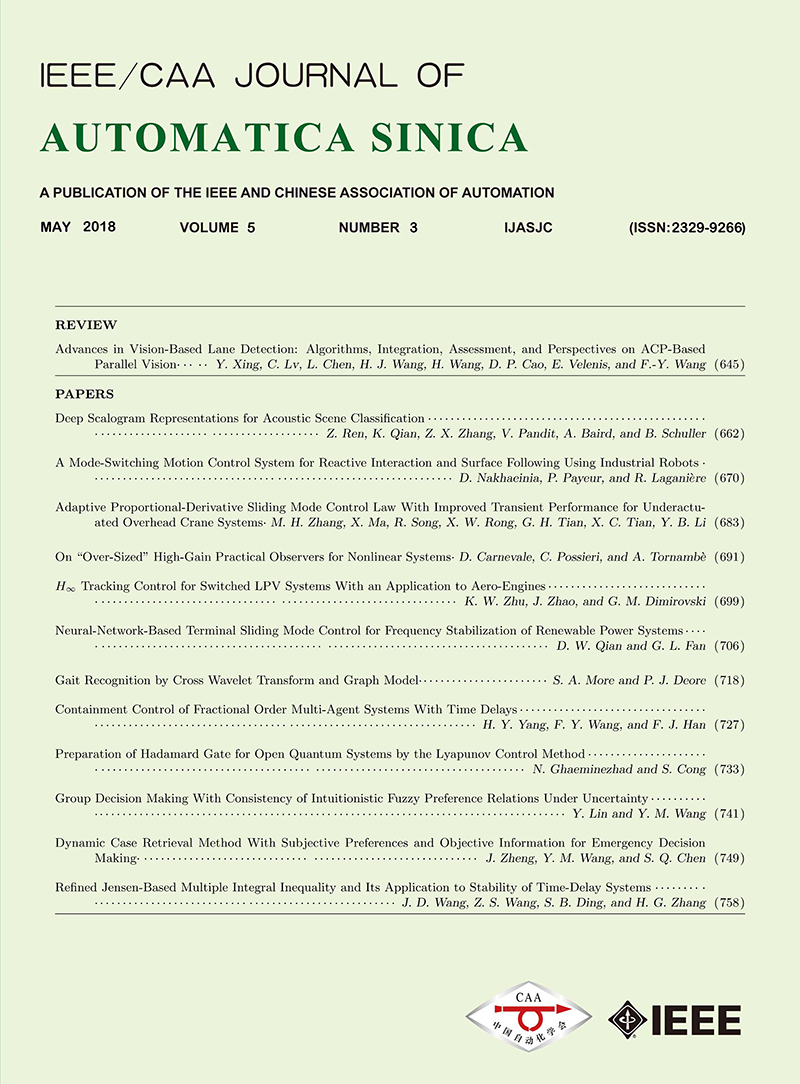 Volume 2
Issue 3
Volume 2
Issue 3
IEEE/CAA Journal of Automatica Sinica
| Citation: | Yongsong Wei and Shaoyuan Li, "Water Supply Networks as Cyber-physical Systems and Controllability Analysis," IEEE/CAA J. of Autom. Sinica, vol. 2, no. 3, pp. 313-319, 2015. |

| [1] |
Park K J, Zheng R, Liu X. Cyber-physical systems:milestones and research challenges. Computer Communications, 2012, 36(1):1-7
|
| [2] |
Jia D Y, Lu K J, Wang J P. On the network connectivity of platoonbased vehicular cyber-physical systems. Transportation Research Part C:Emerging Technologies, 2014, 40:215-230
|
| [3] |
Akella R, Tang H, McMillin B M. Analysis of information flow security in cyber physical systems. International Journal of Critical Infrastructure Protection, 2010, 3(3-4):157-173
|
| [4] |
Park S, Kim J H, Fox G. Effective real-time scheduling algorithm for cyber physical systems society. Future Generation Computer Systems, 2014, 32:253-259
|
| [5] |
Capocci A, Servedio V D P, Caldarelli G, Colaiori F. Detecting communities in large networks. Physica A:Statistical Mechanics and Its Applications, 2005, 352(2-4):669-676
|
| [6] |
Diao K G, Zhou Y W, Rauch W. Automated creation of district metered area boundaries in water distribution systems. Journal of Water Resources Planning and Management, 2012, 139(2):184-190
|
| [7] |
Sheng N, Jia Y W, Xu Z, Ho S L, Kan C W. A complex network based model for detecting isolated communities in water distribution networks. Chaos:An Interdisciplinary Journal of Nonlinear Science, 2013, 23(4):043012
|
| [8] |
Lombardi A, Hörnquist M. Controllability analysis of networks. Physical Review E, 2007, 75(5):056110
|
| [9] |
Nepusz T, Vicsek T. Controlling edge dynamics in complex networks. Nature Physics, 2012, 8(7):568-573
|
| [10] |
Liu Y Y, Slotine J J, Barabási A L. Controllability of complex networks. Nature, 2011, 473(7346):167-173
|
| [11] |
Yuan Z Z, Zhao C, Di Z R, Wang W X, Lai Y C. Exact controllability of complex networks. Nature Communications, 2013, 4:Article number:2447, doi: 10.1038/ncomms3447
|
| [12] |
Jacomy M, Heymann S, Venturini T, Bastian M. Forceatlas2, a continuous graph layout algorithm for handy network visualization. Medialab Center of Research, 2011, 560-1-22
|
| [13] |
Wang S L, Hong L, Ouyang M, Zhang J H, Chen X G. Vulnerability analysis of interdependent infrastructure systems under edge attack strategies. Safety Science, 2013, 51(1):328-337
|